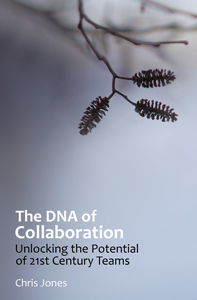Those who delve into organizational culture are often overwhelmed by it’s complexity. It is the result of decades of behaviors, both good and bad, the sum product of what an organization thinks of itself.
Those who know trust know its deeply embedded in our healthy relationships, and absent from our dysfunctional ones. It often provides the spark for collaboration, the genesis of effective teams.

Together, the evolution of trust and culture can spawn a dizzing array of outcomes. Evolution is inspiring that way.
The had part is charting a course. If we imagine of web of narrow but interconnected paths, we can follow the journeys that take us toward trust and culture. These can lead us, with care and nourishment, to bonafide cultures of trust. It is the end state of most enterprising CEO’s, and the holy grail of OD, or Organizational Development.
How do we get there from here?
In our Saturday 10/27/18 chat, we discussed these evolutionary threads, with this outline:
- Q1. Sources of Trust. How can leaders and staffers instill trust across on organization in real time, when trust is painstakingly built over time? Could any of S.M.R. Covey’s “Speed of Trust” principles help?
- Q2. Sources of integrative Culture. Are leaders able to shape an integrative, trusting culture change directly, or must they wait for it to evolve over years and decades?
- Q3. Alchemy of Simple Rules. What simple rules might help trust and culture evolve together, as the prevailing forces come in contact? Can any factors accelerate the chemical reaction?
- Q4. Risks when Trust is pervasive. Does a bias for trust expose the organization to manipulation and foul play? How might leaders and staffers guard against this?
- Q5. Cultures of Trust: the Rewards. What are the most lasting benefits in a culture of trust? How do we know we have built one? What will we see?
Like trust and culture, it will take time for the conversation to evolve. Stay with us. Its going to be a journey.
We’ll continue to unpack the #futureofwork through the lens of social complexity each month, now on most 3rd or 4th Saturdays, from 1-3pm UTC, i.e., 9-11am ET, 2-4pmUK. Stop in at any point during the 2-hour conversation. Can’t make that time? Feel free to tweet thoughts/inputs/comments using hashtags #orgdna #globalchat, or post comments to this blog.
It’s been a great exchange. We’re 6-years in, and gaining momentum. Transcripts of our conversations abound, elsewhere on this site. We hope you’ll join us.
See you online!
Chris Jones | @sourcepov | Charlotte NC
How does a twitter chat work? It starts on Twitter. We recommend a streaming app like TweetDeck. Just append #orgdna to your tweets adding #orgdev #agile #agility #complexity and/or #futureofwork to specific tweets, as relevant. This expands the thread to others who might be interested. Sometimes we’ll chat in the #orgdna stream in real-time, like a flash mob, with insights just popping up. But for the in-depth discussion, join us at the appointed hour on Twitter.
What is #orgdna? It’s a self-selecting community of #orgdev thinkers, discussing collaborative aspects of the organization since 2012.
What is a #globalchat? This may be the first one. Many challenges facing the modern organization are global in nature, or in impact. I’m hoping #orgdna can make #globalchat a more frequent and welcome exchange, with increasing scope of participation and value.
Do we have an agenda? Yes, but it’s evolving as we learn. We’ve captured our key ideas and themes to date using Coggle, and our #orgdna roadmap is posted here (CC4-BY-SA). Have a look, and share your thoughts.






